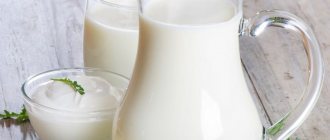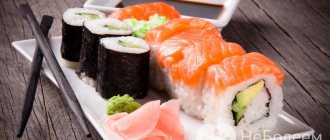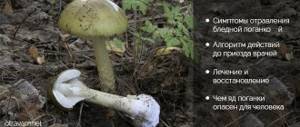Often, when preparing dishes from boletus, an unpleasant situation may arise due to the fact that the boletus turns pink during cooking. This does not frighten experienced mushroom pickers at all, but beginners may be wary and even refuse to eat their favorite delicacy of mushrooms. Next, we will consider what causes this phenomenon, whether it is dangerous, and how it can be dealt with.
A tasty and dangerous morsel
Rarely will a person refuse to eat mushrooms and ask: “why not?” This culture grows all over the world and is loved by a large number of people. However, besides us, there are other connoisseurs of their appetizing properties. Worms. Here are those who enjoy tasting and living inside what they think is an edible house. In this they help the “devil meat” to carry spores and, literally, to propagate the mycelium. The smallest pests and microorganisms feed and at the same time help fungal families survive. They simply cannot cope without their indispensable participation. They will die.
Green, fresh, lush material usually contains a lot of twilight, brown, older, ugly, carbon-rich. The general rule for composting is to add 2-3 days of brown material to 1 day of green material. If compost has the typical sulfate entrainment, it means it is a material with excess carbon content. In this case we will add a clipping or leaf. High nitrogen levels signal ammonia explosions, so we leave compost, shrubs, shrubs or sawdust.
It is generally noted that composting is an important part of composting on a regular basis due to even the acid approach, one to four per month. If you move the material well in composting, you won't need to dispose of the compost at all. However, composting takes much longer. The time required to convert waste into complete compost depends on many factors such as temperature, compost composition, composting, etc. The composting process can be accelerated by composting.
Insects are found quite often in mushrooms. Both poisonous and edible. Especially in good warm and sunny weather. Hard larvae of beetles, flies, mosquitoes and other invertebrates do not harm their home. But they can have a much more negative and sometimes even lethal effect on human health. Poisoning is the first sign that you have eaten a contaminated product. Therefore, carefully avoid such delicacies. Do not collect them and do not eat them under any circumstances. Don't become a new home for these creatures. After all, this is also not excluded. And this is a very compelling argument in favor of why you should not eat wormy mushrooms.
You don't need a garden or composting site. You can also compost at home using small home composters. The human body has always been the host of many parasites, especially microbial ones. It is estimated that between 40 and 75% of the world's population carries the larger parasite, which we can easily find if we look for it. Parasites include bacteria, yeast, fungi, viruses, worms and nematodes. Most people carry at least one of these yeast parasites, we all have them. For most of us, we can find up to 30 different types of fungi, yeast in our mouths where they help digest sugars and starches.
Preparation
Before freezing, mushrooms should be carefully prepared. Preparation is a completely simple procedure and includes several stages.
- To begin with, the mushrooms are carefully sorted.
- The top film from the cap is carefully removed from the boletus, the stem is cleaned and cut. If the mushroom is wormy (identified by small dots-channels that can be seen on the cut of the cap or stem), then it is better to throw it away. Using the handle of a knife and tapping the mushroom cap, remove excess sand or sawdust.
- During cleaning, mushrooms can be sorted into small and large.
- The further process depends on the freezing method. The mushrooms are either left as is or soaked and washed.
Rehabilitation of worm fungus
The easiest way to get rid of this problem is to throw out the infected mushroom. Cut off the fried parts, boil in several waters, pour in acetic acid, dry-salt, or put the caps under the bushes in the country with the thought that someday you will grow mushrooms in your own area - the choice of alternative depends on your responsibility and attitude to your health.
Mushrooms are fungi that have been part of wildlife for millions of years. Fungus includes all types of microscopic fungi that grow in multicellular fibers called hyphae. In contrast, microscopic fungi that grow as individual cells are called yeasts. The interconnected network of these tubular hyphal branches have more genetically identical nuclei and are considered a single organism, which is called a colony or in more technical terms a single fungus.
The forms do not form any special taxonomic or phylogenetic groups. Although some fungi cause disease or food spoilage, others are beneficial for their role in biodegradation or in the production of various foods, beverages, antibiotics, and enzymes. However, as a rule, mold affects the human body.
Unfortunately, or fortunately, modern cooking does not know methods for preparing dishes with such an extreme composition. Wormy mushrooms will not please any sane gourmet even with the most discerning taste. And one last piece of advice. Never bring up the topic of wormy mushrooms while sitting at the table. Not all your guests will understand the meaning of your words if you serve freshly collected and cooked wild mushrooms.
The forms are found in various environments in the form of colorless mycelium. Oysters have different colors depending on the type of shape: white, cream, yellow, green, blue, gray or black. The color of the mycelium is caused by pigments that also color the spores - the spores. Mold spores are very persistent and can travel both inside and outside. If the spores land on a damp surface, they have an ideal environment for them to reproduce. Thanks to them, the body can get rid of lymphatic deposits, which is very important because small parasites live in these deposits.
Bon appetit and attentive to you!
There is probably no person who has never been to the forest. Some people go there just to relax, take a walk or get some fresh air. And someone goes and “hunts”, in this case we mean “quiet hunt”, i.e. mushroom picking. And everything would be fine, but not everything is so smooth here either. Sometimes you start cutting a mushroom to put it in a basket, and you see - it’s wormy! Is it worth taking such “loot” home? What's the best way to proceed? And in general, is it possible to eat wormy mushrooms? You will now learn about this and much more.
It is very difficult to get rid of the often recurring mold, and removing mold from the body can take months or years. We do not have any substances that directly destroy mold, so it is very important to maintain a natural environment in the body that can handle the molds themselves. The immune system itself is involved in the destruction of fungi through its normal activities, mainly through the engulfment of fungal particles by so-called phagocytosis.
Fatty attacks of any tissue in the body - lungs, intestines, heart, urinary tract, digestive tract and more. We divide them into fibrous and yeast. They convert sugar into the energy needed to multiply it, and the excess sugar in the body expands.
Signs of poisoning
Even when collecting edible boletus, you can get poisoned, although this happens infrequently.
Main causes of poisoning:
- Oilseeds were collected in the wrong place (along roads or near hazardous enterprises).
- The cooking technology and sanitary standards were violated.
In case of poisoning, nausea and abdominal pain occur. The victim must be given an adsorbent, given water to drink and rest, and in severe cases, urgently call emergency help.
Another danger to human health is the so-called false butter. Due to inexperience, novice mushroom pickers may put false doubles in their baskets. And this is fraught with serious consequences, since the toxins contained in them can lead to poisoning and disruption of the entire body.
- dizziness,
- heat,
- intestinal disorders.
If such a problem happens to you, you need to urgently go to a medical facility and rinse your stomach.
Almost all edible mushrooms have poisonous counterparts, which are not recommended to be consumed.
Is it possible to eat wormy mushrooms?
Most are more inclined to believe that there is nothing dangerous in this. The worm is not a fool; it will not eat a bad mushroom. To some extent this is true. After all, there are quite a few intact mushrooms in the forest, therefore, even with industrial harvesting, specimens that are less than half damaged by worms are considered quite suitable for consumption. Of course, before sending them to store shelves, they subject the mushrooms to special processing. Therefore, if you decide to collect mushrooms for yourself, then you should not take wormy ones. Follow the rule - less is more. Otherwise, you may have a problem with how to protect uninfected mushrooms from worms. After all, the larvae are so voracious that they can quickly destroy all your “prey” collected in the forest.
If we want to completely cleanse our body of mold, we must also focus on removing unwanted substances such as drug residues - antibiotics, corticosteroids, chemotherapy. We also need to remove radioactive and chemical loads and heavy metals from the body. The next step is to regulate your metabolism and significantly reduce your consumption of refined sugars. Only clean fabric is resistant to mildew.
What health problems can mold cause in the body? Fungi are important allergens and can cause skin or other life-threatening illness in people with very weak immune systems in sensitive individuals. Causes respiratory diseases - bronchial asthma, allergic rhinitis, headaches, eye burns.
How to get rid of worms
Having brought home a forest harvest, first of all, you need to get rid of twigs, insects, and other debris. There are 2 ways to expel worms.
Soaking with salt
Select the mushrooms affected by the larvae into a separate bowl. Cut into large pieces, pour in strong salty brine. It is prepared like this: 4 liters of cold water and 200 grams of table salt. Soak the mushrooms in the saline solution for at least 4 hours. After an hour of soaking, you will see white worms appear on the surface of the water.
After the required time has passed, the brine is decanted. The mushrooms are placed in a colander and washed with running water. The finished product is used for further preparation and freezing for the winter. Washed mushrooms are not suitable for drying. Excess water will lead to rotting and spoilage.
Drying
Butternuts lend themselves well to drying. It is only necessary that they are not wet. Worms, losing comfortable conditions, die and gradually spill out of the mushrooms. The product is prepared in various ways. The simplest one is to string the pieces onto a fishing line. Hang the finished garlands in a well-ventilated place.
In a day, all the larvae will crawl out of the preparations. When there are a lot of forest trophies, it is best to dry them in the oven. To do this, you need to cut the boletus into slices. Spread in a thin layer on a baking sheet. Place in the oven at the lowest temperature. After the product has cooled, shake off any worms well.
What to do with wormy mushrooms?
If you still decide to collect them, then cut off all the areas damaged by the larvae. This way you will have at least some guarantee that other good mushrooms will not be harmed. When you get home, if possible, process them immediately. To do this, cut each wormy mushroom into pieces and place it in highly salted water for several hours. This way all the larvae will come out.
Effective protection is adequate ventilation and the use of appropriate cleaning agents. Mycotoxicosis is a serious disease caused by mycotoxins that exclude fungi. Approximately 50 mycotoxins are directly related to human and animal disease. In particular, immunosuppressants and carcinogenic effects are dangerous. Mycotoxicosis has been known since ancient times. At that time, many poisonings caused by malt and its alkaloids were described.
What are mycotoxins? Mycotoxins are poisonous substances that appear wherever there is mold. These are toxic secondary metabolites that cause various toxic mycotoxicosis syndromes and are ingested, inhaled or through direct skin contact. Their effect depends on the type of toxin and duration of contact, the person's age and condition. The target organs of infection are the liver, kidney, lung, nerve, endocrine and immune systems. Mycotoxins can be mutagenic, teratogenic, carcinogenic and estrogenic and can cause acute toxic reactions.
If you decide not to take a wormy mushroom, then under no circumstances throw it on the ground. It’s better to put it on a branch or pin it on a stick with the spores facing down. In this situation, it will not rot, but will dry out - the spores will begin to gather dust, and soon new foci of mycelium will appear nearby. There is another plus to this. Dried mushrooms will serve as excellent food for animals in the cold winter. The forest inhabitants will only thank you.
They are very harmful to people and animals. They are found on food, animal feed, people and their pets. Mycotoxins depend on several factors - temperature, humidity, type of substrate, etc. and the disadvantage is their stability, mainly thermal stability. They have serious carcinogenic effects in humans.
How can we prevent or get rid of mold against mold infestation and overgrowth? If you have read enough here, you have a lot of questions in your mind about how to get rid of these forms and what is the fastest and most effective way. Our most important step must be to stop using broad-spectrum antibiotics, corticoids, and hormonal contraceptives. It is also necessary to change our existing lifestyle and focus on what we eat.
We remove pests by drying
An equally effective method is drying fruits. Under the influence of the sun, deprived of moisture, all the worms will leave their place of residence. You can dry them in two ways. Mushrooms are cut into thin slices, strung on a thread and hung. The floor is covered with newspaper or paper. After a day, all the worms will come out.
The second way to remove parasites is to cut the mushrooms into plates, place them on a metal sieve and put them in the oven. You can place a baking tray underneath. The temperature should be set to the lowest possible. Afterwards, the fruits need to be cleaned of worms, which come out halfway during drying.
Instead of an oven, you can use a stove or an electronic dryer. It is better to store dried fruits in glass jars, tightly closed with a lid. This way, their shelf life will increase to two years - the larvae will not “come to life”, and new parasites will not appear.
There is another “lazy” drying option that will get rid of the larvae. Peeled mushrooms are laid out on paper and placed on the bottom shelf of the refrigerator. After two weeks, they can be removed and stored in a dry place. If you dry the fruits this way, they will taste more delicate.
Important! It is not necessary to throw away the worms that fall out of the mushrooms. This is an excellent food for aquarium fish.
Why did boletus turn blue during or after cooking?
Encyclopedia "Mushroom-Info" Mushroom Picker's Guide Why did boletus mushrooms turn purple after cooking?
Among all varieties of edible mushrooms, boletus is considered one of the best in taste. They are used in all technological processes: freezing, drying, salting, pickling and frying. The excellent digestibility of butter allows them to be used in any dish. After thoroughly cleaning the sand, grass and leaves, you can begin cooking the mushrooms. However, you may find that the butter has turned purple after cooking - why does this happen, and what can be done in such cases?
Why do boletus turn blue after cooking and should I be concerned?
First of all, you need to know that butter is not characterized by a purple, lilac or blue color after heat treatment. This means that along with the butter mushrooms, there were other mushrooms in the pan - goat mushrooms (goats). But in this case there is no need to be afraid. This is an absolutely edible type of mushroom, which in taste and appearance is practically no different from boletus. A tubular mushroom that is part of the genus Butterfly is called a goat mushroom. They are prepared using the same technology as their “relatives”, but when cooked they turn purple. But the acquired color does not make the mushroom worse. Many housewives decorate boring, monochromatic marinades with these purple “butter” after cooking. This aesthetically unattractive mushroom can be boiled, stewed, fried, and also dried. And so that it does not darken too much and retains its original pink color, you need to add a little table vinegar before cooking.
Another reason why boletus turns blue after cooking is too long a heat treatment. With prolonged cooking, the vegetable protein is destroyed, and the mushroom acquires a bluish tint, but it is barely noticeable. As already mentioned, butter oils cannot turn blue or purple when cooked. In such a situation, it is common for them to change their color to beige or light brown. It all depends on its original appearance, which is influenced by the terrain, soil composition and lighting.
Butter soup puree
To prepare the puree soup, it is better to use fresh mushrooms, but the recipe will not lose its flavor if you use frozen ones.
So, for the puree soup, take:
- fresh mushrooms – 150 g;
- carrots – 1 pc.;
- onions – 1-2 pcs.;
- celery (root) – 200 g;
- milk – 100 ml;
- garlic – 1-2 cloves.
Take salt and spices to taste, and also prepare vegetable oil for frying. Sort the mushrooms, rinse, peel, and remove the films from the cap. Place the mushrooms in a saucepan, bring to a boil, strain, and add fresh water. After boiling, add salt, add the whole onion, then cook for about 20 minutes.
Cut the garlic into thin slices, peel and chop the onion and carrots. Saute the vegetables in hot vegetable oil for about 10 minutes, then pour in a little mushroom broth and simmer over low heat for 5 minutes. Peel, rinse and chop the celery root, place in a saucepan along with sautéed vegetables, continue cooking until the celery is ready. Turn off the heat.
Using a slotted spoon, remove all ingredients from the broth and place them in a blender bowl. Add the broth in small parts and blend everything with a blender until smooth. The consistency should be quite thick. Pour hot boiled milk into the butter soup, bring to a boil, add spices, simmer for just a couple of minutes over low heat, stirring constantly. Make sure the soup doesn't burn!
Add fresh herbs before serving. You can serve the creamy soup with croutons, but put them on a plate immediately before serving. This way the crackers will get a little soggy, but will retain their crunchiness.
You can leave a few cooked whole mushrooms to decorate the dish. When using frozen ingredients to prepare puree soup, they can be boiled in one water (provided that you froze them after pre-cooking), and the cooking time for mushrooms can be reduced to 10 minutes.
Related publications:
Beneficial features
Low-calorie, tasty and healthy butter with a high content of proteins, vitamins, microelements and biologically active substances will serve as an excellent addition to the diet, an element of a healthy diet.
A significant amount of folic acid is found in the tissues, which is involved in hematopoietic processes. For the formation of red blood cells, iron is necessary, of which 100 g of fruiting bodies contains up to 1.3 mg. The content of ascorbic acid, which is a valuable substance for supporting the immune system and the functioning of the hematopoietic system, is about 12 mg per 100 g of edible part.
Due to the presence of these vitamins and iron, these mushrooms can be successfully consumed in people with a tendency to anemia and weakening of the body, as a useful product and means of prevention.
The tissues of the fungus contain the most important B vitamins - thiamine, riboflavin, pyridoxine, as well as valuable minerals - sodium, calcium, fluorine.
Also, mushrooms of this boletaceae family contain significant amounts of zinc and manganese, which have a beneficial effect on the reproductive system.
Traditional medicine widely uses antibacterial properties, observing the anti-inflammatory effect of various drugs from fruiting bodies and, especially, from the slippery skin.
Symptoms
The signs of mushroom poisoning are very similar to the clinical picture of various food intoxications (see Symptoms of mushroom poisoning: what you need to pay attention to first). The only distinguishing factor is the period of development of symptoms. In case of boletus poisoning, symptoms do not occur immediately, but after several hours, to be precise, from 30 minutes to 6 hours after ingestion.
General symptoms
Main signs of poisoning:
- dysfunction of the gastrointestinal tract (vomiting, diarrhea, increased flatulence, heartburn);
- spasmodic pain in the abdominal area;
- hypertension, which is replaced by a sharp decrease in blood pressure;
- feeling of dry mouth;
- chills;
- increased sweating;
- trembling of limbs;
- apathy;
- drowsiness;
- decreased concentration;
- pale skin;
- appearance of blueness around the mouth.
Digestive problem
Important. In children, pregnant women and the elderly, if they have chronic pathologies of the urinary system or digestive system, poisoning can occur even when consuming ordinary oilseeds. And if mushrooms contain a significant level of harmful substances, then the gastrointestinal mucosa easily absorbs them, which is accompanied by acute symptoms against the background of digestive disorders.
Symptoms of intoxication with canned butter
Thanks to its cap, covered with a mucous substance, the butter marinade becomes oily in structure, which creates favorable conditions for the growth of bacteria. After some time, you may find that the contents of the jar have become cloudy and such mushrooms are no longer suitable for consumption.
Canned boletus poses a serious danger to the body, including death. In cans of preserved food that have not passed all the processing rules, a spore-forming bacillus begins to multiply, which produces butolotoxin, which is the strongest organic poison.
When these bacteria cause damage, the following signs appear:
- vomit;
- diarrhea;
- impaired concentration;
- increased salivation;
- muscle weakness;
- failure of the cardiovascular system;
- breathing disorder.
Important. The pathogenic bacillus gets inside the jars along with soil particles. Some housewives believe that rinsing the boletus under running water will be enough. But the stick remains under the soft skin of the cap and, accordingly, ends up in the marinade. The price of health in this case depends on the efforts of the housewife.
If you feel unwell, see a doctor immediately
Butolotoxin is an anaerobic, so the absence of oxygen creates favorable conditions for its reproduction. Prolonged boiling or repeated sterilization does not help destroy the pathogenic microorganism.
How to cook boletus without turning pink or red
To ensure that the fruiting bodies do not change color during heat treatment, you should carefully consider the preliminary preparation of the harvested crop for cooking. It is necessary to carefully examine the fruiting bodies before heat treatment and identify undesirable species among them:
- grates, which cause the butter to turn pink when cooked;
- moss mushrooms, which cause the boletus to turn red during cooking;
- goats that turn neighbors in the pan purple.
It is relatively difficult to distinguish these species from each other, but it is possible. Kozlyaks, unlike many Boletovs, do not have a skirt. The lattice has a cap of smaller diameter with a pronounced tubercle in the middle. The flywheel has a thicker cap.
Mushroom recipes: fresh butter soup
It is not necessary to boil the mushrooms before freezing; you can fry and freeze them fresh (the skin under and above the cap must be removed), but the boiled ones produce compact briquettes that are convenient to store in the freezer. And from the water in which the mushrooms were boiled, you can make a delicious boletus soup.
To prepare it, take boletus, potatoes, carrots, fresh herbs, onions, vegetable oil, and salt to taste. Peeled, prepared fruits need to be filled with water, boiled after boiling for a few minutes, then strain through a colander. Next, add new water, add salt, and cook for about 20 minutes, skimming the foam from the surface. In the meantime, you need to peel and chop the carrots and onions, place them in a frying pan with hot oil, and fry until tender. Use a slotted spoon to catch the butter from the broth, add to the vegetables in the pan, and fry for a few more minutes.
Place peeled, washed, chopped potatoes into the mushroom broth, boil, add herbs and spices, and simmer for 10-15 minutes. Place the fried boletus and vegetables into the broth and cook the mushroom soup until the potatoes are fully cooked, then turn off the heat. Cover the finished fresh butter soup with a lid and let it brew for a few minutes. Serve with sour cream and fresh bread.











